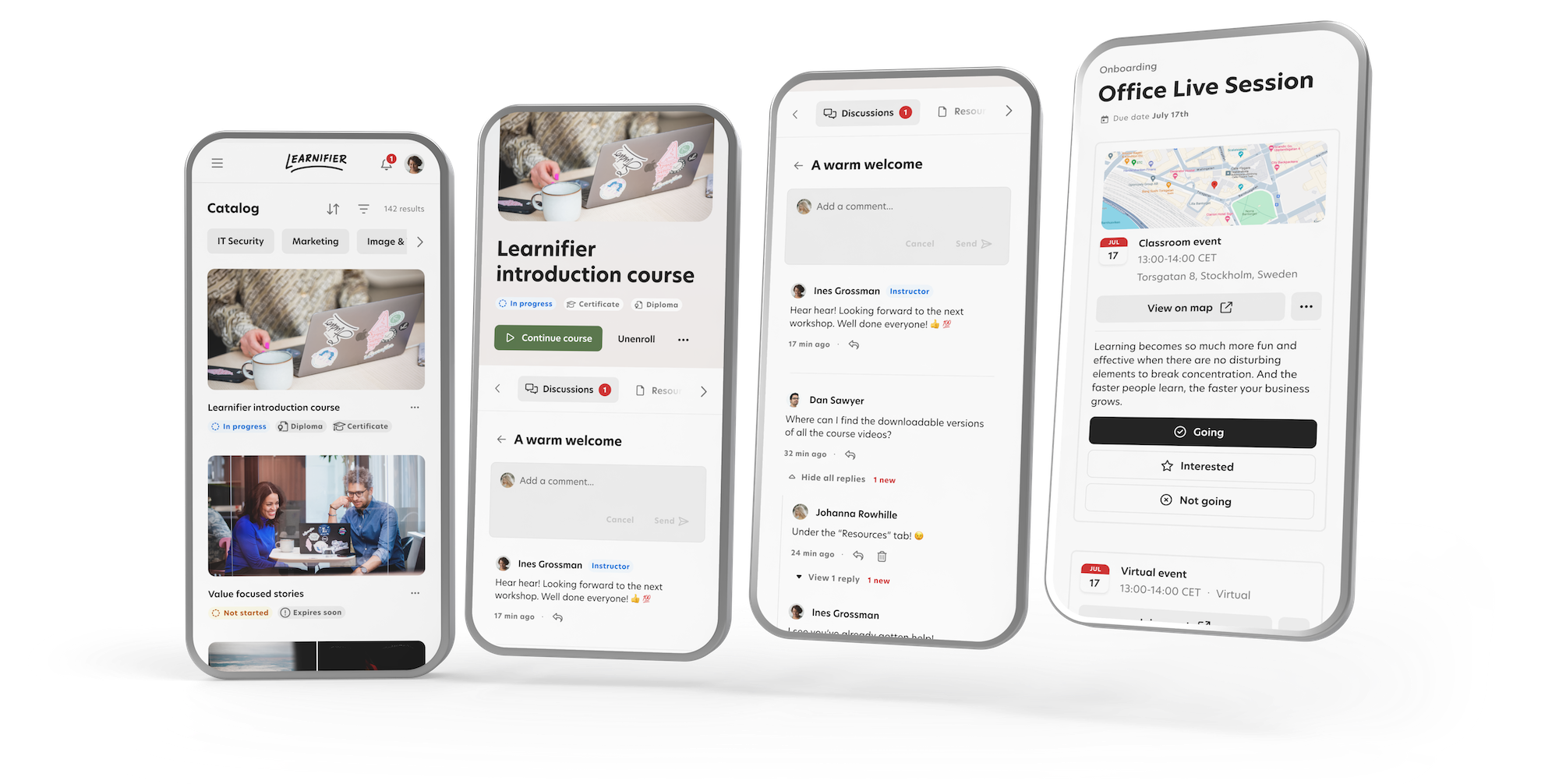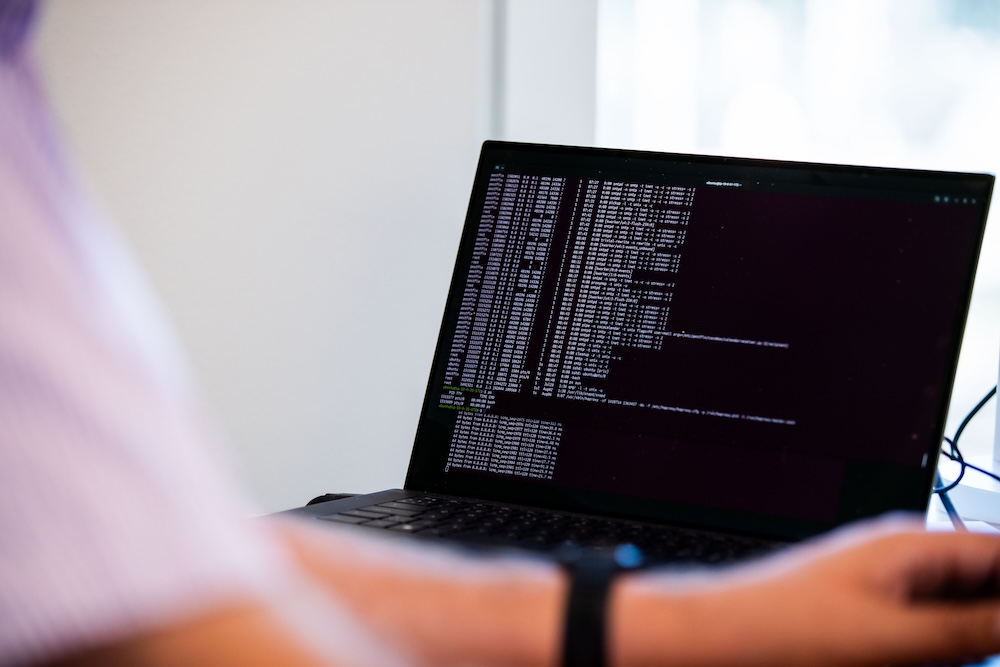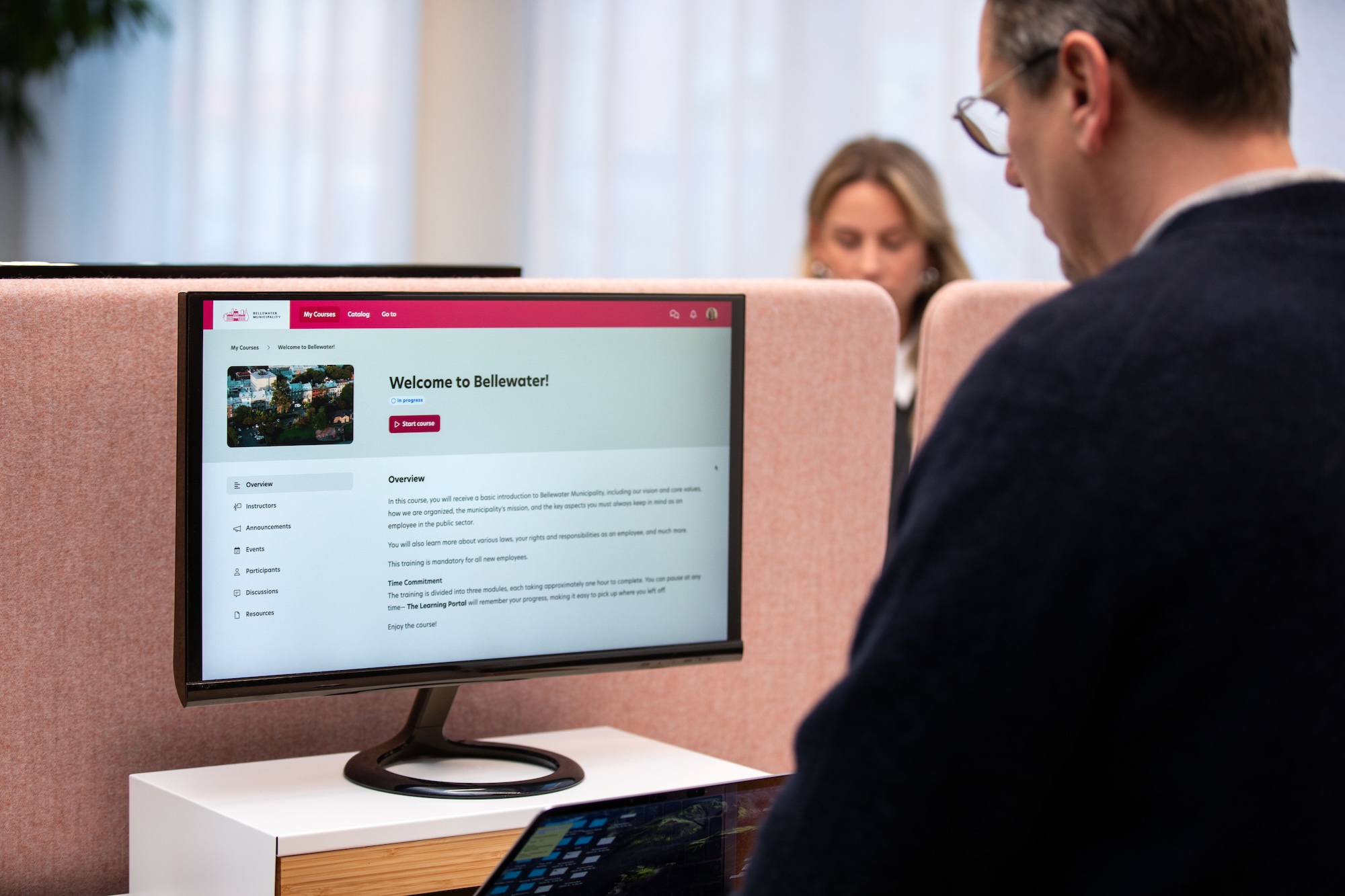What is an LMS (Learning Management System)?
An LMS is software that organizations use to create, deliver, and track training programs. Instead of juggling emails, PDFs, and spreadsheets, everything is managed in one place. It gives employees easy access to courses, videos, and resources whenever they need them, while automating tasks like enrollments, reminders, and reporting. At the same time, it allows managers to track progress, certifications, and compliance in real time.
Looking for quick answers? Jump to the FAQs to see the most common questions about LMS.

Key features of an LMS
While every LMS has its own strengths, most share a set of core features that make learning structured and scalable. These are the essentials:
- Content Delivery – Upload and organize videos, documents, presentations, quizzes, and formats like SCORM or xAPI.
- User Management – Assign roles (learners, trainers, admins) and create personalized learning paths.
- Tracking & Reporting – Follow learner progress, completion rates, and quiz results and generate compliance reports in a few clicks.
- Assessments & Certifications – Test knowledge through quizzes and assignments, and issue certificates automatically.
- Integrations – Connect with HR systems, CRMs, or webinar tools to make everything work together seamlessly.
- Mobile Learning – Give learners the flexibility to train anytime and anywhere, whether at a desk or on the go.
With Learnifier, organizations often highlight how intuitive course creation and automation save time for trainers, while learners enjoy a smooth and engaging experience.

How does an LMS work?
An LMS brings together three roles: administrators, instructors, and learners.
- Hosting & Access – Most modern LMSs are cloud-based, where the provider handles updates and maintenance.
- User Login – Learners log in to access assigned courses and resources.
- Learning Experience – They complete modules, attend live sessions, and track their own progress.
- Administration – Instructors and admins upload content, manage enrollments, and analyze progress using reports.
Example: A new employee joins your company. Instead of multiple in-person sessions, they log into your LMS, complete onboarding modules, take quizzes, and track progress. Meanwhile, HR can see in real time who’s finished and who still needs support.
What are LMS platforms used for?
LMS platforms have become core tools for learning and development across industries. Their flexibility means they can support a wide range of needs:
Common use cases:
- Employee Training – Strengthen technical and soft skills.
- Onboarding – Give every new hire a consistent and engaging start. Many organizations see onboarding as one of the biggest wins from using an LMS.
- Continuous Development – Provide employees with libraries of content for career growth.
- Department-Specific Training – Tailor courses for areas like finance, customer support, or sales.
- Compliance Training – Meet legal and industry requirements with ease.
- Cybersecurity Training – Help staff prevent data breaches and spot risks.
- Remote & Hybrid Training – Ensure equal access for distributed teams.
- Customer & Partner Training – Train customers, partners, or suppliers at scale.
Many Learnifier clients use the platform for multi-audience training, like onboarding employees while also educating partners and customers from the same hub.

Types of learning supported by LMS platforms
One of the greatest strengths of an LMS is flexibility. It supports different formats so training can match learner preferences and keep engagement high:
- Live Training – Real-time sessions, on-site or via webinars.
- Self-Paced Learning – Learners move through courses at their own speed.
- Blended Learning – A mix of live and self-paced elements.
- Hybrid Learning – Join in person or virtually, depending on preference.
- Mobile Learning – Access training through mobile devices.
- Microlearning – Short lessons designed for quick consumption.
- Social Learning – Peer-to-peer forums, group projects, and knowledge sharing.
User roles in an LMS
Most LMSs connect three core groups:
- Administrators → Manage the platform, set up learning paths, and monitor results.
- Instructors → Create content, run sessions, and provide feedback.
- Learners → Employees, students, or partners who take the courses.
Industries that benefit from LMS platforms
While LMSs are widely used in education, they’re just as valuable in other sectors:
- Technology & Software – Keep employees and customers up to date.
- Finance – Deliver compliance and ethics training.
- Healthcare – Provide training on procedures and safety without disrupting care.
- Manufacturing – Standardize safety training across sites.
- Retail & Hospitality – Quickly onboard seasonal staff.
- Consulting & Professional Services – Package training as part of client services.
- Franchises – Ensure consistent brand training across locations.
Learnifier is widely used across industries in the Nordics, from transport companies ensuring compliance and safety training to municipalities delivering employee development and onboarding programs.

Benefits of using an LMS
The right LMS benefits both organizations and learners:
- Centralized learning hub – Keep all training in one place.
- Scalability – Train 10 or 10,000 learners with the same system.
- Consistency – Ensure everyone gets the same quality of training.
- Compliance - Automate certifications and track requirements.
- Cost & time savings – Reduce travel and physical resources.
- Engagement – Interactive, flexible learning keeps motivation high.
- Onboarding made simple – Give new hires a structured and inspiring start.
- Data-driven insights – Reports and analytics highlight what’s working.
With Learnifier, many organizations also value automation that reduces admin work while boosting course completion rates.
Types of LMS platforms
Not all LMS solutions are the same. Common types include:
- Cloud-based (SaaS) – Easy to set up, provider-managed, scalable.
- On-premise (self-hosted) – Installed internally, with higher IT demands.
- Open-source – Free, but requires technical expertise.
- Enterprise vs. SMB – Larger companies may need advanced integrations, while smaller businesses look for simplicity.
- Specialized vs. All-in-one – Some focus on compliance, others cover a broad range of training needs.
How to choose the right LMS
Choosing the right LMS depends on your needs. Key factors include:
- Training needs – What kind of training will you deliver (onboarding, compliance, skills)? How many learners will use it?
- Ease of use – An intuitive platform makes adoption easier for both learners and admins.
- Customization – Options for branding, role-based access, and tailored learning paths.
- Content creation – Tools for building and organizing courses.
- Integrations – Ensure compatibility with your HR, CRM, and communication tools.
- Mobile readiness – A must for today’s workforce.
- Analytics – Reports to measure effectiveness and compliance.
- Cost & scalability – Make sure the system grows with you.
LMS success stories
1. Employee onboarding
Example: Pinchos
- Challenge: Rapid growth across multiple countries made it difficult to deliver consistent onboarding and training.
- Solution: Launched Pinchoversity, a branded digital academy in Learnifier. Courses combine culture introduction with role-specific training, delivered through videos, automation, and integrations.
- Results: Unified onboarding across 70+ restaurants, reduced admin, and a scalable learning platform supporting international expansion.
2. Compliance & safety training
Example: Hector Rail
- Challenge: Operating across multiple countries, Hector Rail needed consistent, mandatory safety and compliance training for diverse roles. Traditional methods were inefficient and costly.
- Solution: Built a modern training ecosystem in Learnifier with 70+ digital courses and VR modules, reducing reliance on physical locomotives for training.
- Results: Structured compliance training across borders, SEK 1.2 million saved, and streamlined certification processes.
3. Continuous skills development
Example: Löfbergs
- Challenge: With 300 employees across six countries, Löfbergs needed a structured way to support onboarding, compliance, and leadership development.
- Solution: Implemented Learnifier as a central hub with automated pre-boarding, digital onboarding, role-based training, and a blended leadership program.
- Results: Faster onboarding, improved compliance visibility for managers, and a culture of continuous learning

Why choose Learnifier?
Learnifier is more than just an LMS. It’s everything you need to design impactful learning experiences – simple, scalable, and tailored for organizational growth.
- For Everyone and Anyone – Learnifier makes learning accessible, intuitive, and flexible. Whether you’re building or taking courses, the platform keeps you in control, from branding and permissions to content and structure. The result: learning that’s easy, impactful, and tailored to your organization’s needs.
- Smart Data – Strong Outcomes – With comprehensive learning data at your fingertips, you can evaluate initiatives, identify trends, and make informed decisions. Learnifier equips you with the insights needed to optimize programs and demonstrate their impact, strengthening the case for future learning and skills development.
- Automate and Accelerate – Save time and boost engagement with seamless automation. From course assignments and reminders to certificates and tracking, Learnifier handles the workflows, allowing you to focus on what matters most: your people. Set it up once, and watch learner motivation and completion rates rise.
Want to see it in action? Try Learnifier for free today and discover how simple, flexible, and engaging learning can be.
Common questions about Learning Management Systems
Can an LMS be used for customer or partner training?
Yes. Many organizations use an LMS to train customers, partners, and resellers — often through white-labeled portals.
Can an LMS track compliance training?
Yes. LMSs can automate certifications, send reminders, and track completion to ensure compliance with industry or legal standards.
Does an LMS work on mobile devices?
Yes. Modern LMSs are mobile-responsive or provide dedicated apps for learning on the go.
How do I choose the right LMS for my organization?
Consider ease of use, scalability, integrations, pricing, and support — and always test with a free trial or demo.
How much does an LMS cost?
Pricing varies. Some charge per active user, others per course, and some offer flat-rate subscriptions. Costs depend on features, scalability, and support.
Learnifier offers fair and transparent pricing tailored to your organization’s needs. See our LMS pricing or start a free trial to experience the platform first-hand.
What are examples of popular LMS platforms?
Examples include Learnifier, Moodle, TalentLMS, Cornerstone, and Blackboard.
Is an LMS only for large companies?
No. Small and medium-sized businesses also benefit from LMSs, especially cloud-based solutions that are easy to scale as the business grows.
What does LMS stand for?
LMS stands for Learning Management System.
What industries use LMS platforms the most?
Common sectors include technology, healthcare, finance, manufacturing, retail, consulting, and education.
What is the main purpose of an LMS?
An LMS is designed to deliver, manage, and track training programs in one centralized platform.
What types of content can you upload to an LMS?
Most LMSs support videos, PDFs, SCORM/xAPI courses, quizzes, assignments, and live webinar integrations.
What’s the difference between an LMS and an LXP?
An LMS focuses on structured training management, while an LXP (Learning Experience Platform) emphasizes personalized, learner-driven content discovery. Learnifier combines the best of both worlds — providing the structure and control of an LMS together with the engaging, user-friendly experience of an LXP. Read more about our learning platform.






.webp)



.webp)








